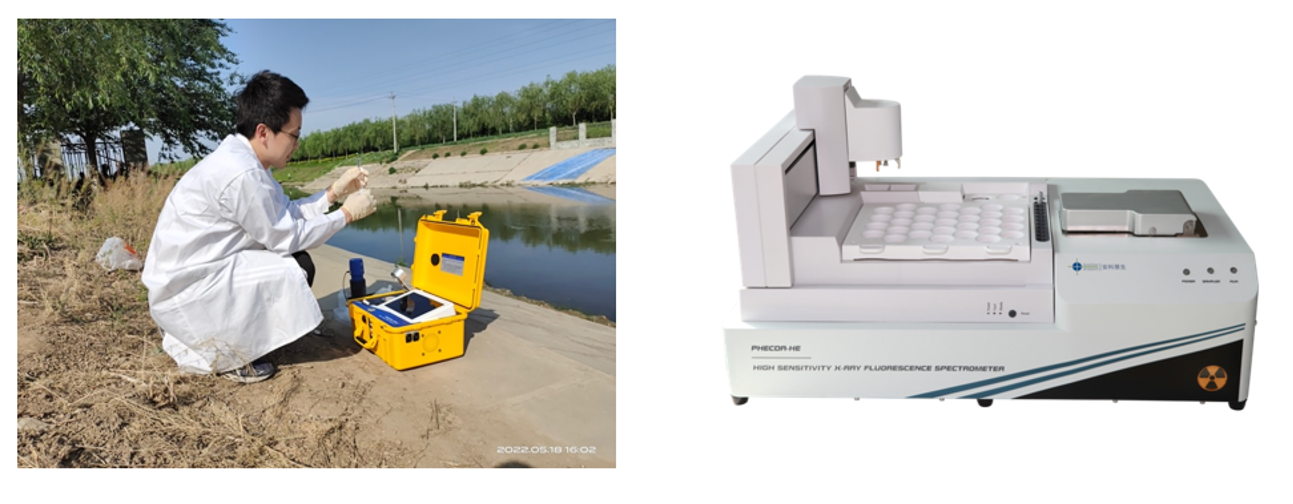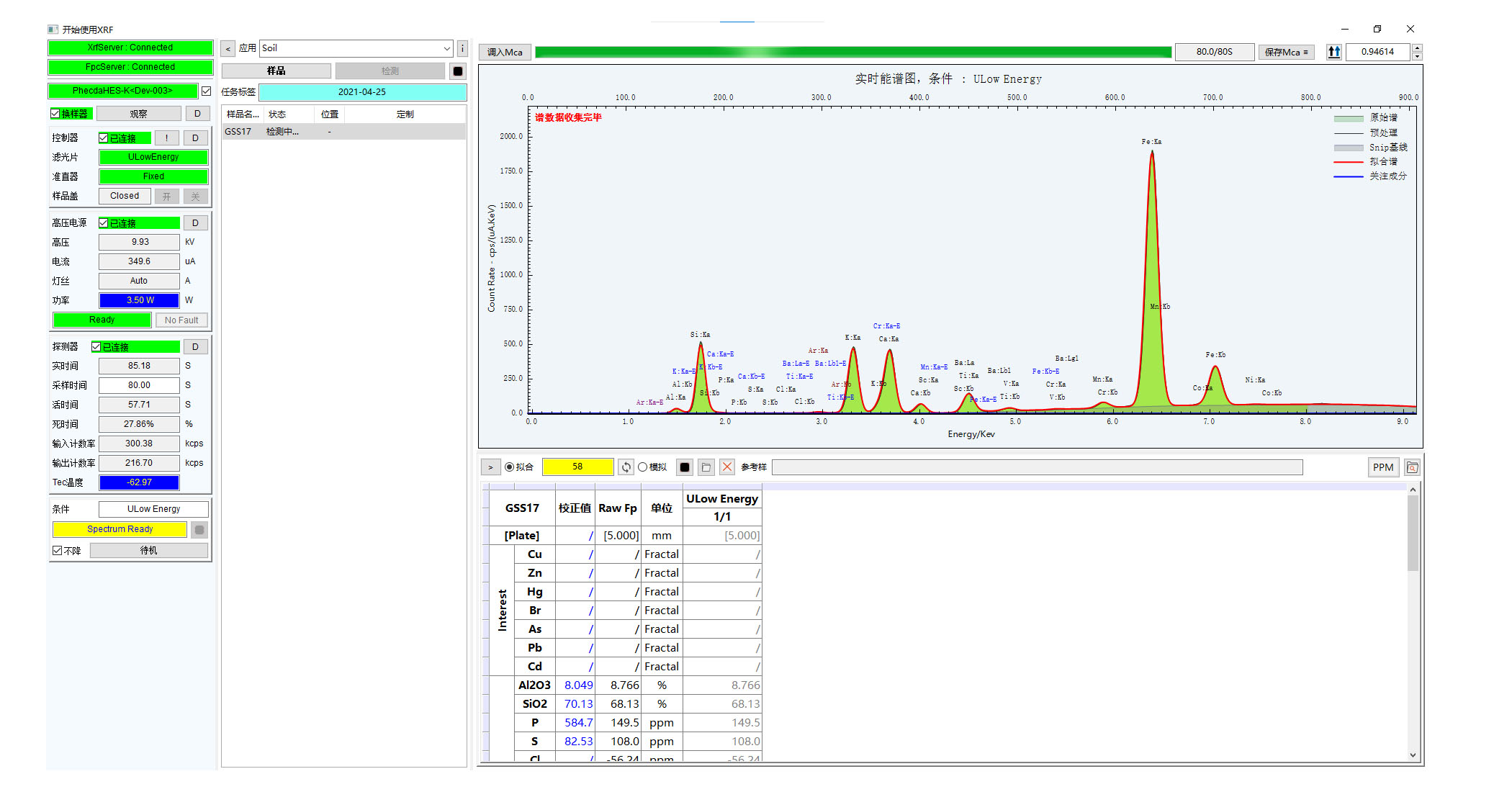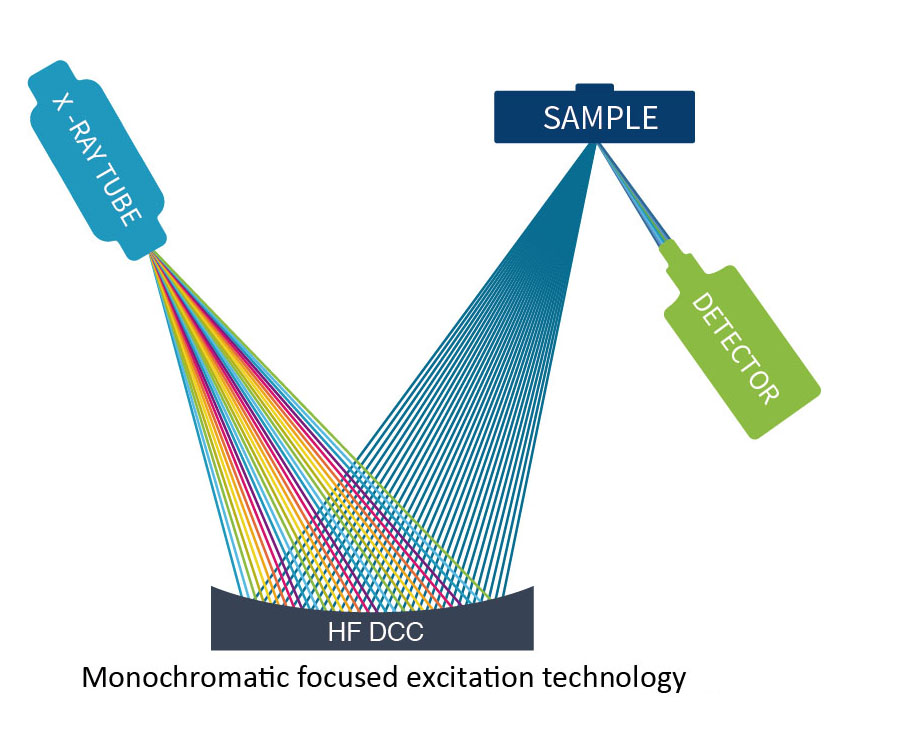Application Summary
 High sensitivity X-ray fluorescence spectrometer PHECDA series
High sensitivity X-ray fluorescence spectrometer PHECDA series
"GB 5085 Identification of Hazardous Waste Identification Standard Toxic Substances Content Identification" stipulates the limit values of more than 20 toxic element substances. Due to the variety of solid waste. With the complex sample matrix, the variety of elements, the wide content range, the instrument pollution and other challenges, it is difficult to quickly quantitatively analyze the content of various solid waste toxic elements. Traditional XRF requires standard samples for quantitative analysis, and the diversity of solid waste makes it almost impossible to rely on standard samples to establish a standard curve.
Ancoren launched a complete application solution: a high-sensitivity X-ray fluorescence spectrometer with fast fundamental parameter method to detect the content of toxic elements in solid waste and hazardous waste. It is simple in sample processing and suitable for various solid waste samples.
Method Principle
(1) Hardware core technology
High Sensitivity X-ray Fluorescence Spectrometer(HS XRF®)
Monochromatic excitation
The background interference generated by the X-ray tube emission spectrum by sample scattering is reduced by 2 orders of magnitude.
Focused excitation
The intensity of fluorescence rays of the sample elements accepted by the SDD detector increased.
(2)Software Core Technology
Fast Fundamental Parameter Method(Fast FP®)

Operating Software
Mathematical model and database of the X-ray process are established.
The Matrix, spectral line interference, and background deduction will be calculated.
A few of reference samples to improve quantitative accuracy.
Spectra & Data

Mapping fitting of solid waste sample
The measurement of solid waste sample
| Elements |
Certified |
Found |
Relative Deviation |
| Sb |
88.9±8.1 |
79.37 |
10.71% |
| As |
40.2±4.1 |
47.01 |
16.93% |
| Ba |
221±20 |
213.53 |
3.38% |
| Cd |
12.5±1.3 |
12.50 |
0.01% |
| Cr |
244±21 |
221.56 |
9.20% |
| Pb |
78.3±7.3 |
79.33 |
1.32% |
| Co |
56.1±5.2 |
53.20 |
5.17% |
| Cu |
200±18 |
190.36 |
4.82% |
| Mn |
409±38 |
427.12 |
4.43% |
| Ni |
83.8±7.9 |
88.33 |
5.40% |
| Sr |
298±25 |
296.40 |
0.54% |
| Sn |
118±10 |
116.78 |
1.03% |
| Hg |
118±10 |
99.28 |
15.86% |
| Zn |
164±15 |
143.49 |
12.51% |
| Mo |
128±11 |
126.68 |
1.03% |
Method detection limit
Table of method detection limit for toxic elements in solid waste samples unit:mg/kg
| Elemental Type |
Light Elements |
Light Metals |
Metals |
Heavy Metals 1 |
Heavy Metals 2 |
| Elements |
S、Cl、P |
K、Ca、V |
Cr、Mn、Co |
Hg、Ag、Ba、Sr、
Pt、Pa |
Ni、Cu、Zn、As、
Pb、Br、Se、Cd、
Sb、Tl |
| Detection Limit |
50 |
10 |
5 |
2 |
0.2 |
Comparison table of heavy metal limits and detection limits stipulated in "GB 5085.3 Hazardous Waste Identification Standards-Leaching Toxicity Identification"
| Heavy Metal |
Cu\Zn\Ba |
Cd\Se |
Pb\Cr\Ni\Ag\As |
Hg |
| Limits(mg/L) |
100 |
1 |
5 |
0.1 |
| Detection Limits(mg/L) |
0.5 |
0.1 |
0.2 |
0.3 |
Method features
 The range of elements are wide
It can analyze more than 20 kinds of toxic elements specified in the identification standard of hazardous waste at one time, and the detection limit meets the judgment standard.
The range of elements are wide
It can analyze more than 20 kinds of toxic elements specified in the identification standard of hazardous waste at one time, and the detection limit meets the judgment standard.
 Sample adaptability is wide
The Fast Fundamental Parameter method accurately calculates and deducts the matrix difference caused by different types of solid waste, and is suitable for analyzing various solid, powder and liquid samples.
Sample adaptability is wide
The Fast Fundamental Parameter method accurately calculates and deducts the matrix difference caused by different types of solid waste, and is suitable for analyzing various solid, powder and liquid samples.
 Accuracy
The Fast Fundamental Parameter method eliminates matrix differences and spectral line interference, then corrects the calculation errors through a few standard samples to obtain accurate quantitative results.
Accuracy
The Fast Fundamental Parameter method eliminates matrix differences and spectral line interference, then corrects the calculation errors through a few standard samples to obtain accurate quantitative results.
 Fast
The sample preparation is simple and fast, and the analysis time of a single sample is less than ten minutes.
Fast
The sample preparation is simple and fast, and the analysis time of a single sample is less than ten minutes.
 Measurement on site
PHECDA-ECO is enogh light to carry, and we can easily complete the identification of toxic elements in solid waste and hazardous waste.
Measurement on site
PHECDA-ECO is enogh light to carry, and we can easily complete the identification of toxic elements in solid waste and hazardous waste.

Sample processing
We provides complete sample processing equipment and operation procedures.
Original statement:
This article is the original work of ancoren company except for the quotation. If it is forwarded and quoted, the source must be indicated, otherwise it may involve infringement. For more detailed technical information, please consult the staff of Ancoren.











